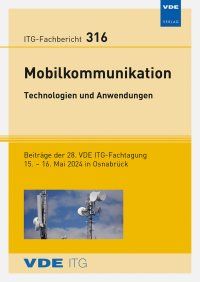Future BANs - DTN Applications and Requirements
Konferenz: Mobilkommunikation - 28. ITG-Fachtagung
15.05.2024-16.05.2024 in Osnabrück
Tagungsband: ITG-Fb. 316: Mobilkommunikation – Technologien und Anwendungen
Seiten: 6Sprache: EnglischTyp: PDF
Autoren:
Khaldi, Rami; Lehmann, Armin; Ghita, Bogdan; Trick, Ulrich
Inhalt:
With the anticipated development of 6G technology, the scope of Body Area Network (BAN) applications is undergoing significant expansion, enhancing capabilities for a wider range of sophisticated scenarios, including augmented/virtual reality, holographic-type communication, and in particular integrated sensing and communication. This evolution introduces more stringent requirements, such as high data rates, low latency, precise synchronization, and advanced sensing capabilities. Given these advancements, traditional simulators, constrained by their inability to provide a real-time bidirectional connection with the actual network, fall short of addressing these complexities. A Digital Twin Network (DTN), serving as a real-time virtual replica of the physical network, can bridge this gap by simulating and testing BANs in order to troubleshoot, predict, and optimize their functionality and performance. This paper aims to present advanced BAN use cases with a special focus on sensing along with their stringent demands and demonstrates how DTN plays a crucial role in addressing these requirements through tailored DTN applications. Additionally, it will elaborate on the specific requirements for the digital twin that emerge from these applications. This work also involves identifying potential models that need to be considered to construct a comprehensive BAN digital twin framework.


